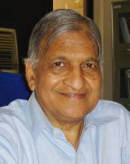
Convergence of Values - Spiritual, Political & Economic
Dr. Hema Pokharna
Dr. Hema Pokharna, a biochemist by profession, presented a paper titled “Non-violent Communication and Social Change”.
She began with an exposition of her interpretation of the meaning of ‘Namaste’-You and I together, that’s the real representation of what ‘Namaste’ means. It’s the bowing down to the divinity in others. Yet, we at times let go of this quality and behave in ways that are not very enhancing. What’s that happens to us that we are no longer connected to our divinity? This is something that made her explore and she came up with Marshall Rosenberg’s process of Non-violent communication. The following points need pondering:
- It’s our life’s alienative thinking that creates the disconnection and prevents the expression of divinity. Non-violent communication is the ability to make an observation versus an evaluation. If anything unpleasant happens to us, our first response is to blame somebody or say that the system is wrong. We tend to put the responsibility on someone else and then describe it in a way and bring the thinking process in that way. So, to begin with non-violent practice we must begin with a simple observation, become a video camera, and simply pick up what the facts, figures and words are, without evaluating or interpreting that thought process, when we judge somebody or create a wrongness, is what creates irritation and frustration leading to non-violence.
- Awareness of what happens to us, in our body in terms of feelings. Feelings are physiological changes and emotions are triggered when needs are not being met. When we are appreciated we feel happy, otherwise hurt, disrespected and alienated.
- Ability to stay connected with the unmet needs without blaming or putting anybody to shame.
 Dr. Ashok Bapna
Dr. Ashok Bapna